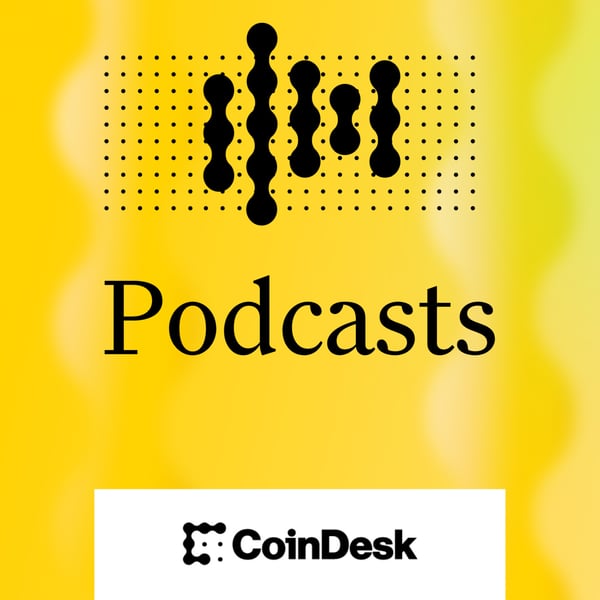RESEARCH: A Day in the Life of an Ethereum 2.0 Validator
CoinDesk Podcast Network
CoinDesk
4.8 • 689 Ratings
🗓️ 12 September 2020
⏱️ 31 minutes
🧾️ Download transcript
Summary
With Ethereum 2.0's much anticipated move to Proof-of-Stake getting closer, CoinDesk Research Analyst Christine Kim spoke with Ben Edgington and Vijay Michalik on what would-be validators need to know.
This episode is sponsored by Crypto.com, Bitstamp and Nexo.io.
“There are indeed responsibilities that come with [Ethereum 2.0 staking]. You can’t just stake and leave it. You need to run what we call a client or a validator software.”
That’s Ben Edgington, the product owner of Teku at ethereum venture capital studio Consensys. Teku is one of five software clients currently being battle-tested on the official Ethereum 2.0 test network, Medalla.
These clients will connect users to the highly anticipated proof-of-stake blockchain aimed at significantly boosting Ethereum transaction speeds and throughput. Ethereum 2.0 clients like Teku will also enable users to earn rewards as validators on the new network.
See also: Ethereum 2.0: How It Works and Why It Matters
Similar to the role of miners on the current Ethereum blockchain, validators on Ethereum 2.0 will be responsible for processing transactions and creating new blocks. What that looks like in practice, according to Edgington, is keeping client software up and running 24/7 on a dedicated computer device.
As for which of the five clients to run, Vijay Michalik, a strategist for the engineering team behind Teku, explained the technical differences between them all were minor. However, their main distinction between clients in the eyes of Michalik comes down to long-term development vision.
“For Status [the Ethereum messaging company], the Nimbus client is focused on trying to build a client for a low-footprint system. So they’re building for embedded systems such as mobile devices and potential IoT [Internet of Things] in the future,” said Michalik. “At the ConsenSys protocol engineering, we’re trying to lean into our specialization which is building the enterprise grade [Ethereum 2.0 client].”
See also: Ethereum 2.0: Closer Than Ever Still Plenty of Work to Do
For more information about Ethereum 2.0, you can download the free research report featuring additional developer commentary about the upgrade on the CoinDesk Research Hub.
See Privacy Policy at https://art19.com/privacy and California Privacy Notice at https://art19.com/privacy#do-not-sell-my-info.
Transcript
Click on a timestamp to play from that location
| 0:00.0 | You can run a dedicated box at home. |
| 0:04.0 | You can run it in the cloud. |
| 0:06.0 | A lot of people won't be comfortable with doing that, |
| 0:08.0 | and they will want to join staking pools or delegate their stake to a staking provider. |
| 0:15.0 | The ETH1 chain with proof of work lives on until we get to phase 1.5 of ETH2, which is where we merge, |
| 0:24.9 | ETH1 and ETH2. |
| 0:26.3 | That could be 18 months, two years away. |
| 0:29.0 | So a lot can happen in that time. |
| 0:32.8 | This episode is brought to you by Crypto.com BitStamp, and nexo.io. |
| 0:38.3 | Hello everyone. You're listening to Developer Perspectives, Ethereum 2.0 from CoinDest Podcasts. |
| 0:45.3 | I'm Christine Kim, a CoinDus research analyst, and in this series we'll be discussing the hotly anticipated Ethereum 2.0 upgrade. |
| 0:53.3 | We'll speak with the folks inside the Ethereum developer community |
| 0:57.0 | and take a look behind the scenes at what comes next. |
| 1:00.9 | For this episode, we're going to be talking about the validator dynamics of Ethereum 2.0. |
| 1:06.7 | For today's show, I'm joined by two folks from Ethereum Venture Capital Studio Consensus. |
| 1:12.3 | We have Ben Edgington and Vijay McAllick. Ben is the product owner of Tecku, the enterprise |
| 1:18.8 | grade Ethereum 2.0 client at Consensus. VJ is a strategist for the engineering team behind |
| 1:25.5 | Tecou, formerly called Pegasus, now called Consensus Quorum. |
| 1:30.3 | It's great to have you on the show, Ben and Vijay. |
| 1:33.3 | Thanks, Christine. Good to be here. |
| 1:35.3 | Cheers, likewise. |
| 1:36.3 | On the last episode, we talked about the staking dynamics of Ethereum 2.0. |
... |
Please login to see the full transcript.
Disclaimer: The podcast and artwork embedded on this page are from CoinDesk, and are the property of its owner and not affiliated with or endorsed by Tapesearch.
Generated transcripts are the property of CoinDesk and are distributed freely under the Fair Use doctrine. Transcripts generated by Tapesearch are not guaranteed to be accurate.
Copyright © Tapesearch 2025.

